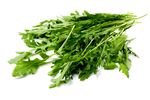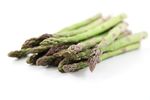VEGETABLE STORAGE GUIDE - WWW.SHAREDLEGACYFARMS.COM - MYDIGITALFARMER
←
→
Page content transcription
If your browser does not render page correctly, please read the page content below
Acorn Squash (Winter Squash) Acorn squash is a mildly sweet squash with orange flesh and green-black skin. There are also varieties with striped speckled skin. It has heavy ribbing and is acorn- shaped. To store: Store in a cool, dry, dark place at around 50 degrees, but make sure they do not freeze. Under the best conditions, they should keep for 3-4 months. They get sweeter in storage as the starch converts to sugar. Once cut, you can wrap them in plastic and store them in the refrigerator for 5 to 7 days. To use: To bake, slice in half lengthwise, scoop out seeds, and place facedown on cookie sheet. Add 1/2 inch of water to pan. Bake at 400 degrees for 45 minutes to an hour until shells are soft and starting to collapse. Remove from shells, and fill with butter, brown sugar, maple syrup, seasoning or fillings. To freeze: Simply cook squash and mash or puree it. Then pour it into ice cube trays and freeze. Pop the frozen cubes into freezer Ziplock bags. Apple There are so many varieties and colors of apples. Some are good for eating out of hand. Some are better for pies and baking. Some are better for applesauce. To store: Store apples in your refrigerator in a plastic bag. They are odor-absorbent, so keep them away from onions, potatoes, and other strong-flavored items. Apples can also be dehydrated (with cinnamon sprinkled on top), and stored in a Ziplock bag! To freeze: Apples can be frozen with or without sugar. Wash, peel, core and slice apples, removing any brown spots. Add ascorbic acid (or Fruit Fresh) to prevent them from browning. Add sugar (if desired) and place in a freezer-safe plastic bag, removing as much air as possible. Then freeze! www.SharedLegacyFarms.com
Apricot Ripe apricots will have an even orange-blushed skin and will yield slightly to pressure. To store: If your apricots are hard and arrive unripe, store at room temperature until ripe. (Putting them in a refrigerator stops the ripening process). You can place apricots in a paper bag to speed up ripening. To dehydrate: Simply cut in half, remove the pit and place each half on a tray in the dehydrator. Dehydrate according to instructions. No need to take the peel off! To freeze: Choose ripe apricots (not mushy ones). Prepare a light sugar solution using 6 cups water and 2 cups sugar. Heat sugar solution on stove, stirring constantly to keep it from burning. As soon as it is dissolved, remove from heat and let cool. Wash apricots. To skin them, place them in a pot of boiling water for 30 seconds, then dunk them in an ice bath to stop the cooking. The peels will slide right off. Remove pits, and cut into halves or slices and put in bowl of water. Mix with Fruit Fresh (ascorbic acid) or 1/4 cup lemon juice to prevent browning. Drain apricots. Combine the apricots with the sugar syrup. Pack into Ziplock freezer bags, removing as much air as possible. The syrup should cover all the fruit. Freeze for up to a year. Arugula Arugula has a peppery, slightly bitter flavor. It is stronger than most lettuces, so it’s often paired with other greens. Mature arugula has sturdy leaves, whereas baby arugula tends to be more tender and milder in flavor. Hotter weather makes for spicier leaves. To store: Arugula is highly perishable and will only last about 2 days. Store in the fridge inside a perforated plastic bag. If you decide to wash it first, be sure to spin the leaves dry before placing them loosely into a Green Bag with a dry paper towel to absorb the moisture. To freeze: Blanch leaves in boiling water or steam for two minutes, followed by soaking in ice water. Remove from ice water and drain well. Freeze "balls" of arugula on a cookie sheet in individual portions. When frozen, pop them into a Ziplock bag. www.SharedLegacyFarms.com
Asparagus One of the first vegetables to emerge in May. The thinner the stalks, the more tender. To store: Stand the asparagus up in a glass or jar with about an inch or two of water, making sure all the ends are sitting in the water. We've found that a 2-cup measuring cup is a great container. Loosely cover the asparagus with a plastic bag and store in the refrigerator for up to a week. To prep: Cut off the bottom inch of the woody stem. To cook: Roast or grill spears with olive oil and salt. It's also delicious raw in salads or lightly steamed. To freeze: Blanch small spears 2 minutes, medium spears 3 minutes, in a pot of boiling salt water. Dunk into ice water for 2-3 minutes. Drain and then pack into Ziplock bags. Basil To store: Basil is very sensitive to cold. Do not refrigerate fresh basil; it will turn black. Instead, strip the lower leaves off the stems and place stems in a glass of water on the kitchen counter like a flower. To prep: Mince well. Add to butter, cream cheese, or your favorite pasta sauce. Make a batch of pesto with pine nuts, Parmesan, olive oil, salt, and garlic. To dehydrate: Remove leaves from stem and place on a piece of paper towel on a glass plate. Cover with another piece of paper towel. Microwave plate on high for 1 minute. Leaves will be dry. Crinkle them with your finger and place them in a dry container, such as a Mason jar with a lid. To freeze: Basil does not freeze well. Instead, make a batch of pesto and freeze it flat in Ziplock bags. www.SharedLegacyFarms.com
You can also read
























































